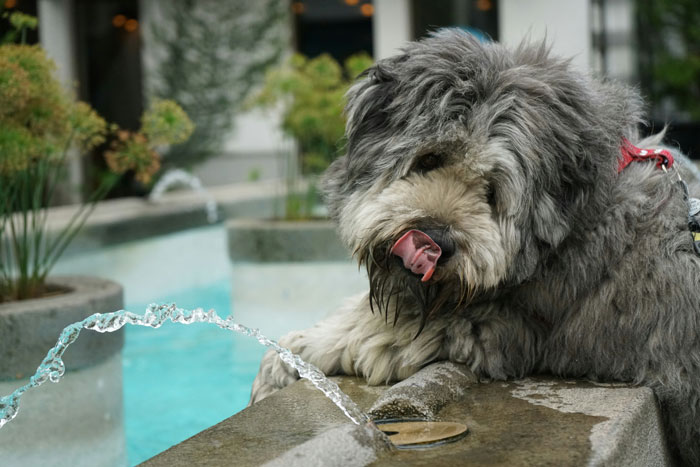Some dogs are simply just picky eaters and may occasionally skip a meal if they are going on a hunger strike. But a decreased appetite may also be a sign of a sick dog. In this article, we will discuss how many days without eating a dog can go, potential reasons your dog is not eating, when to be concerned, and tips to encourage your dog to eat.
HighlightsHealthy adult dogs can technically survive 3 to 5 days without food as long as they drink water.A dog skipping more than 2 meals in a row should prompt a vet visit due to potential health concerns.Puppies, especially of small breeds, cannot go long without food due to the risk of hypoglycemia.Common reasons for a dog’s lack of appetite include new food, dental problems, and serious illnesses.
The information provided herein is for informational purposes only. Please refer to ourdisclaimerfor more details..
Table of ContentsHow Long Can a Dog Go Without Eating?Make Sure Your Dog Is Still Drinking WaterPotential Reasons Your Dog Isn’t EatingTips to Encourage Your Dog to Eat
How Long Can a Dog Go Without Eating?
Image credits:Cup of Couple

While most healthy dogs can go without food for a few days, pregnant or nursing dogs and dogs with pre-existing health conditions have greater or different nutritional requirements. This means they cannot go as long without food.
It should also be noted that young, growing puppies need to be fed more frequently than adult dogs. Small and toy breed puppies in particular are more prone to hypoglycemia or low blood sugar, which can be life-threatening. These puppies need to be fed multiple times a day and cannot go more than several hours without food.
Although most dogs can survive without food for a few days, that does not mean you should wait that long before you take your dog to the vet. A decreased appetite is a sign that something more serious might be going on. This is especially true if your dog has additional symptoms such as lethargy, vomiting, or diarrhea. Monitoring your dog’s appetite is important because, without treatment, anorexic dogs can quickly become dehydrated and malnourished.
Make Sure Your Dog Is Still Drinking Water
Image credits:Anna Stampfli

While most dogs may be able to go without food for a few days, this is only if they are still consuming a normal amount of water. Like humans, dogs cannot go as long without water when compared to food. If your dog has a reduced appetite, it is especially crucial that he is still drinking water to preventdehydration.
Common signs of dehydration in dogs include:
• Dry, tacky gums
• Thick, ropey saliva
• Dry nose
• Dry, sunken-looking eyes
• Loss of skin elasticity
To ensure that your dog is adequately hydrated, he should have constant access to clean, fresh water. Readthis articleto learn what else dogs can safely drink besides water.
Potential Reasons Your Dog Isn’t Eating
There are many possible reasons your dog may not be eating. Some of these causes are self-limiting or easily corrected while others may be due to a more serious underlying health issue.
These are some common reasons why dogs don’t eat:
•Expired or Spoiled Food: Like human food,dog food has an expiration date. That being said, once opened, dog food has a shorter shelf life that does not necessarily reflect the expiration date on the label. For example, open canned food is usually only good for a few days when stored in the refrigerator. In addition to being unappetizing, spoiled food can cause foodborne illness in your dog. Even dry food contains fat which can become rancid over time. To help prevent this, dog food should be kept in its original container or a clean air-tight container and stored in a cool, dry place.
•Gastrointestinal Obstruction: Sometimes, dogs swallow things they shouldn’t such as toys, bones, rocks, or even clothing. Ingestion of a foreign body can lead to a blockage in the gastrointestinal tract. In addition to a sudden loss of appetite, these dogs often present with abdominal pain, vomiting, and diarrhea.Gastrointestinal obstructionis a medical emergency and may require surgery.
•Illness: Numerous types of illness can negatively affect a dog’s appetite. Examples range from infectious diseases like intestinal parasites to more chronic conditions like kidney disease or cancer.
•Anxiety or Stress: Anxiety or stress may cause a dog to stop eating. Some dogs are more sensitive to changes in their routine or environment. For example, moving homes, boarding at a kennel, or adding a new pet to the family may impact your dog’s appetite.
•Pain: Pain affecting the chewing muscles or pain associated with the temporomandibular joint (TMJ) may impair your dog’s ability to eat. Pain anywhere in the body, especially chronic pain, can be distracting or may inhibit your dog’s ability to reach his food bowl (e.g. neck or back pain).
•Vaccinations: Just like humans, dogs may feel slightly under the weather for a day or two followingvaccination. Common symptoms following vaccination in dogs include tiredness, mild fever, tenderness at the vaccine site, and decreased appetite. These symptoms are usually mild and should resolve in a couple of days.
•Medications: Some medications have unwanted side effects such as nausea and may cause a lack of appetite. Examples include certain antibiotics, pain medications, and chemotherapy drugs.
•Picky Eater: Some dogs occasionally refuse to eat because they are picky eaters. In fact, dogs can get bored of eating the same food every day. To learn more about this and how to keep your dog engaged with his meals, readthis article.
Tips to Encourage Your Dog to Eat
If your pup isn’t eating, these are some methods that might help:
• Feed on a consistent schedule
• Try out different types of food bowls
• Avoid giving too many treats since this may spoil his appetite
• Avoid abrupt or frequent diet changes since this can lead to decreased appetite
• Hand feed your dog
• Heat up your dog’s food in the microwave (make sure it’s not too hot to avoid burns)
• Offer wet food in addition to or instead of dry food (canned food also has a higher water content and will help prevent dehydration if your dog isn’t eating as much)
• Add low-sodium chicken or beef broth to his dry dog food
• Offer a bland, easily digestible diet that will be gentle on your dog’s stomach (e.g. cooked white rice with plain unseasoned boiled chicken)
• Add plain unseasoned boiled chicken on top (caution as this may make him less likely to eat his normal food plain in the future)
• A puzzle toy may make eating more fun and interesting for your pup
Keep in mind that most of these tips are only meant to help in the short term. If your dog misses more than 2 consecutive meals or consistently has a reduced appetite, you need to schedule an appointment with your veterinarian.
311views311views
Pet Wellness